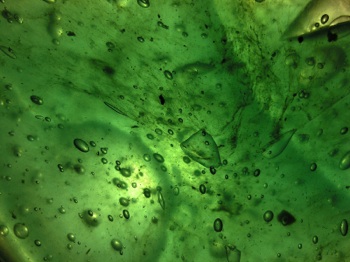A magazine where the digital world meets the real world.
On the web
- Home
- Browse by date
- Browse by topic
- Enter the maze
- Follow our blog
- Follow us on Twitter
- Resources for teachers
- Subscribe
In print
What is cs4fn?
- About us
- Contact us
- Partners
- Privacy and cookies
- Copyright and contributions
- Links to other fun sites
- Complete our questionnaire, give us feedback
Search:
The robot that’s made from mould

Here’s a word we never thought we’d use to describe the cutting edge of robotics: slimy.
That’s exactly what Plasmobot is, though. It’s being built by Professor Andy Adamatzky, who has maybe the best job title in the world. He’s the Professor of Unusual Computing at the University of the West of England in Bristol. He’s making his robot out of plasmodium, one of the developmental stages of a slime mould called Physarum polycephalum. It will be the world’s first biological robot.
Will work for food
It’s kind of weird to think of a lump of slime as a robot. “Most people’s idea of a computer is a piece of hardware with software designed to carry out specific tasks,” says Andy. “This mould, or plasmodium, is a naturally occurring substance with its own embedded intelligence.” You’d be forgiven for thinking slime can’t possibly have much intelligence, but the plasmodium is actually able to solve a very tricky computational problem: finding the shortest path between points. It can also move things. If you put some food near it (the plasmodium likes oat flakes in particular), says Andy, “it grows tubes which oscillate and make it move in a certain direction”. While it’s moving the plasmodium can carry objects on top of it. Voila! Now it’s starting to make itself useful.
Slime on your skin?
The handy thing about plasmodium is that it will always respond in the same way to the same stimuli, which means it can be programmed. What will Andy be making it do? He says that Plasmobot “will sense objects, span them in the shortest and best way possible, and transport tiny objects along pre-programmed directions.” That’s for starters, anyway. In the future Plasmobot may be able to deliver chemicals to a target, or help assemble machines. Biological robots might even live inside us, helping to deliver drugs to particular spots in our bodies, or on our skin, just helping out with routine tasks.
Living with humans and helping move stuff for us will make a change from plasmodium’s usual life: it tends to live under logs and on decaying leaves. But why shouldn’t it get out more? When you’re the world’s most intelligent slime, you’ve got to show off a bit.


